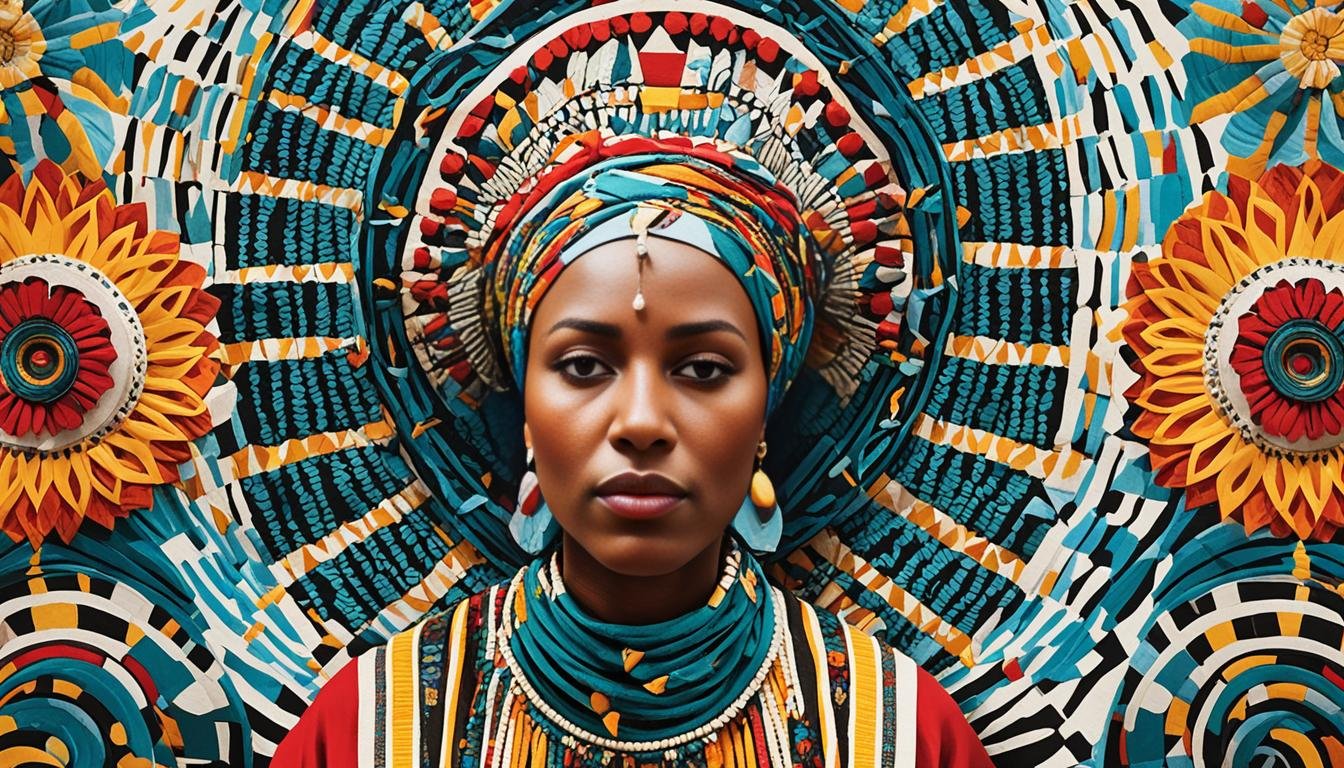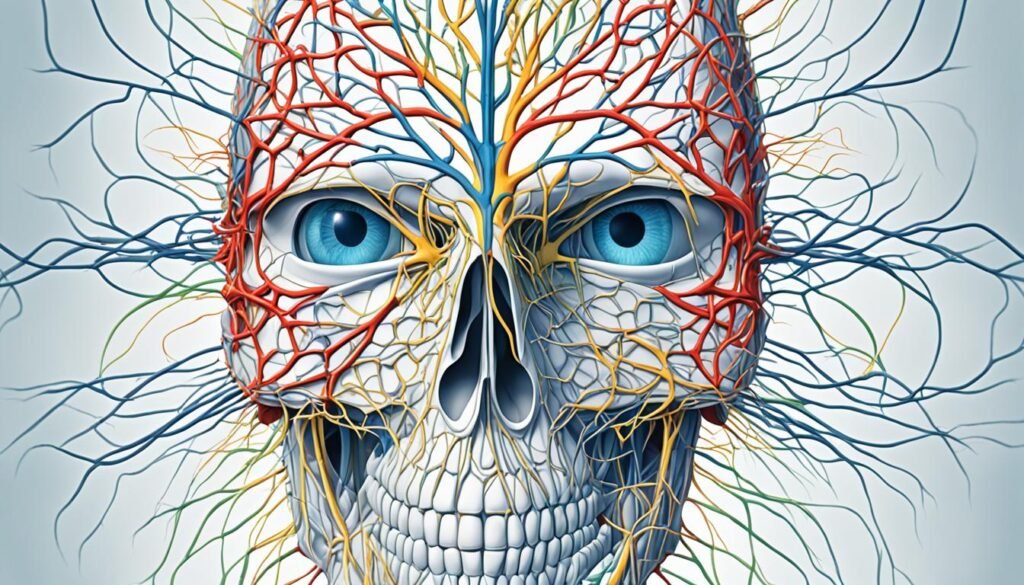Understanding Teardrops: A Guide for South Africans

Teardrops are a deep part of our lives, showing a wide range of feelings. They can mean joy, sadness, relief, or heartache. In South Africa, our culture shapes how we see these tears. We’ll look at how our biology, psychology, and culture mix to affect our tears.
It’s key to see how crying shows what’s going on inside us. We all have our own stories to tell through tears.
Looking closer, we see how important it is to have support and express our feelings in our communities. Tears are more than just sadness; they call for understanding and healing. To learn more, see how tears fit with branding and marketing in South Africa. For example, teardrop banners can make events more visible, just like our feelings help us understand ourselves and others.
Key Takeaways
- Teardrops show many emotions, like joy and sadness.
- Crying is a key way to express our feelings.
- Knowing the cultural meaning of tears is important for South Africans.
- Support and understanding help with healing.
- Tools like teardrop banners boost visibility and connection.
The Emotional Significance of Teardrops
Tears are a powerful way to show how we feel inside. They reveal our emotions deeply, whether it’s sadness or happiness. This shows us how crying is a natural way to react to strong feelings.
Understanding the Role of Tears in Expression
Our tears say things that words can’t. They show our feelings of sadness, anger, or relief. These tears have special chemicals like prolactin and adrenocorticotropic hormone. This shows that crying is more than just a reflex; it’s a deep emotional response.
The Connection Between Tears and Emotional States
Studies show that our feelings make us more likely to cry. Adults cry for many reasons, like feeling sad, happy, or nostalgic. Crying helps us feel connected to others, making us feel supported.
It also makes us feel closer to those around us. This closeness is built on empathy, creating a sense of community. For more on how to connect with others, check out this guide.
What Causes Teardrops?
Exploring the reasons behind teardrops takes us into the mix of biological and psychological factors. Tears are key to how we express our emotions, showing up in different ways based on the situation. We see this in the variety of tears we produce, from basal to emotional tears.
Biological Triggers of Tears
The science behind tear production is complex, involving over 1,500 proteins crucial for eye health. Our eyes produce three types of tears: basal, reflex, and emotional. Basal tears keep the eyes moist and healthy, reflex tears flush out irritants, and emotional tears express our feelings like joy or sadness.
We make about 15 to 30 gallons of tears yearly. Age and hormones can change how much we produce. For example, women tend to have more prolactin, which might make them tear more. As we get older, making basal tears might drop, causing dry eyes and discomfort.
Psychological Factors and the Release of Tears
Our mental state deeply affects how we cry. Stress, sadness, or relief can make us tear up, showing how our mind and body are connected. Pseudobulbar affect (PBA) is a condition where people with certain neurological diseases cry a lot, like those with stroke or Parkinson’s disease.
Studies show we cry in response to our complex emotions, linking our mental health to crying. Understanding this can help us value tears more in our lives. Babies often cry due to blocked tear ducts, which usually clear up on their own in the first year. For more info on tear-related conditions, check out this article.

Cultural Context of Teardrops in South Africa
In South Africa, teardrops are a key part of the culture. They show the strong bonds between people in their shared grief and sorrow. At important events like funerals, people come together to express their feelings. They sing, tell stories, and do ceremonies to remember the lost ones and mourn together.
Expressions of Grief and Sorrow in South African Communities
When people in South Africa face loss, they show their feelings in many ways. Families and friends hold wakes where they share deeply. This brings everyone closer, showing support and unity. Traditional songs with sad lyrics make people cry together, creating a space to share grief.
The Role of Tears in South African Art and Literature
Tears also show up in South African art and literature, going beyond just grief. Artists and writers mix tears with themes like love, loss, and identity. Through art and words, they show the deep feelings of humans. This storytelling connects with many, reflecting their own stories of struggle and victory.

| Aspect | Details |
|---|---|
| Type of Expression | Communal gatherings, song, storytelling |
| Purpose | To honour the deceased and support each other |
| Artistic Reflection | Themes of love, loss, and cultural identity in literature and art |
| Emotional Impact | Unites individuals through shared experiences, encourages healing |
Teardrops and Their Impact on Mental Health
Crying has deep effects on our mental health. Studies show it can ease emotional pain and build resilience. When we cry, our body responds in a way that helps control our mood and stress.
The Therapeutic Effects of Crying
Crying is a natural way to handle our feelings. It triggers the parasympathetic nervous system, giving us a calming feeling. This helps us find emotional balance again.
Research shows tears release oxytocin and endorphins. These are key in easing pain and lifting our mood. People often feel better after crying, as it helps them deal with sadness and grief.
Understanding Weeping as a Coping Mechanism
Weeping is a key way to cope with emotions. Through interviews and studies, we see how people use tears to get through tough times. When we cry over loss, it shows we need support from loved ones.
Crying lets us express our feelings and builds empathy. It brings people together, offering comfort and support. This shared experience strengthens our emotional bonds.
It’s important to note that crying can be a sign of deeper mental health issues. If it gets out of control, we should seek help. Seeing tears as a way to cope helps us build emotional strength, leading to better mental health.
| Type of Tear | Purpose | Properties |
|---|---|---|
| Reflex Tears | Protects eyes from irritants | Contains enzymes for fighting bacteria |
| Continuous Tears | Keeps eyes moist | Maintains vision clarity |
| Emotional Tears | Expresses emotions | Flushes out stress hormones and toxins |
Understanding Teardrops: The Science Behind Crying
The science of crying reveals a complex world behind the tears we produce. Each type of tear has a special purpose, affecting our emotional health and well-being. Studies show that crying can be good for us, helping our mental state.
The Different Types of Tears
There are three main types of tears, each with its own role:
| Type of Tear | Function | Composition |
|---|---|---|
| Basal Tears | Moisturise the eye and protect against contaminants | Water, salts (NaCl, KCl), proteins |
| Reflex Tears | Wash out irritants (dust, smoke) | Water, higher salt concentration than basal tears |
| Emotional Tears | Express emotions and enhance emotional health | Hormones (prolactin, Leu-enkephalin), proteins, water |
Each type of tear is vital. Basal tears keep the cornea moist and healthy. Reflex tears protect the eyes from irritants. Emotional tears contain special proteins that can reduce stress and pain.
Recent Studies on the Benefits of Crying
New studies have shown that tears can move across the eye’s surface, not just to the edges. Research at the Ohio State University College of Optometry found that teardrops can go to the eye’s centre. This was discovered through mathematical models that looked at tear fluid dynamics, including viscosity and gravity.
Studies also highlight the mental health benefits of crying. Being with supportive people while crying can lead to more emotional relief. This shows how important community and connection are in dealing with emotions.
As we learn more about teardrops, we value the science of crying and its benefits. Knowing about the different tears helps us see the importance of emotional health. It encourages us to see crying as a natural way to heal.
Addressing Heartache and Sadness
Heartache brings a mix of emotions, making us look for ways to cope. We go through tough phases that feel too much. By understanding these feelings, we can face them head-on, helping us heal. Tears during this time show our feelings and help us let go.
How to Cope with Emotional Pain
There are ways to deal with emotional pain. Acknowledging our feelings is a good start. Seeing our tears as a natural part of healing helps too. Doing things we love, like exercising or being creative, can lift our mood. Being in nature can also offer peace and a place for thought.
The Importance of Seeking Support
Getting support is key when we’re going through heartache. Friends or family can offer comfort and understanding. Professional help, like counselling, can also guide us through our feelings. Even local groups, like Event Branding, can be places to talk and share. Asking for help shows strength and is important for getting better.
| Activity | Description | Benefits |
|---|---|---|
| Creative Activities | Engagement in art, writing, or music | Provides emotional release and self-expression |
| Physical Exercise | Yoga, walking, or team sports | Releases endorphins, improving mood |
| Nature Walks | Spending time outdoors | Enhances mental clarity and peace |
| Professional Counselling | Therapeutic sessions with a trained professional | Helps process grief and emotional pain |
| Community Support Groups | Accessible meet-ups or forums for sharing experiences | Builds connections and shared understanding |
Conclusion
Looking at teardrops, we see a deep story in the lives of South Africans. We’ve seen how crying is key to expressing our feelings. It shows the depth of our experiences and how we handle our mental health.
Crying is not a sign of weakness. It shows we are human and need to connect with others. This connection is vital for our mental health.
Studying teardrops in both their physical and cultural meanings helps us understand their role. We’ve seen that crying is crucial for our mental health. It helps us deal with sadness and heartache.
By valuing these feelings, we build stronger bonds in our communities. This understanding helps us support each other better.
Remember, it’s important to seek help when we’re feeling down. For more on emotional strength and support, check out Event Branding. Let’s accept our tears and the stories they tell. This way, we can heal and understand ourselves and others better.
FAQ
What are teardrops and what do they signify?
Teardrops are symbols of deep emotional experiences. They can show feelings like sadness, joy, or relief. They let people share their feelings openly, showing vulnerability and honesty.
Why do we cry?
We cry for many reasons, both biological and psychological. Tears can come from stress, grief, or relief. They help us release emotions and build strong social bonds by sharing feelings with others.
How do tears differ from one another?
There are three kinds of tears: basal tears for eye lubrication, reflex tears from irritants, and emotional tears from feelings like sadness or joy. Each type has its own function and makeup.
What role do teardrops play in South African culture?
In South Africa, teardrops show deep community grief during big life events. Crying is linked with cultural acts like singing, telling stories, and ceremonies. It brings people together in emotional unity.
Can crying have therapeutic benefits?
Yes, crying can lower stress hormones and improve mental health. It’s a way to deal with grief, sadness, and joy. This helps build emotional strength and self-awareness.
How does emotional pain affect our body?
Emotional pain can make us physically respond, like producing tears. Knowing how our mind and body connect helps us understand how to handle feelings of sadness and heartache.
What should we do when we feel overwhelmed by sadness?
When feeling sad, it’s important to accept our emotions and get support from loved ones or experts. Doing things that let us express our feelings, like talking or making art, can help.
Related Posts
Event ROI Calculator: How R50,000 in Branding Equipment Generated R2.5 Million in Sales
When we say that R50,000 in branding gear drove R2.5 million in sales, that might sound like marketing fantasy. But for us at Event Branding, it’s a real-world illustration of event ROI done right. In this post, we’ll walk through how to calculate that ROI, step by step, using a simplified event roi calculator model. More importantly, we’ll show you
The Ultimate Guide to Hybrid Corporate Events in South Africa (2025 Edition)
South Africa’s event management market is growing at an impressive 5.10% CAGR, and the energy around events in 2025 is electric. Companies are moving beyond the old “either/or” mindset—no longer just choosing between an in-person event or virtual events. Instead, they’re embracing hybrid event models that offer in-person and virtual experiences seamlessly combined. This ultimate guide will show you how